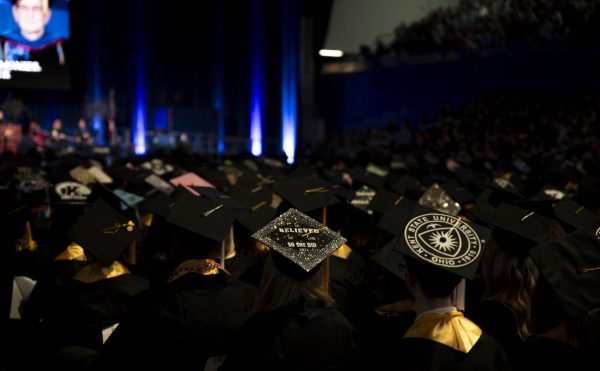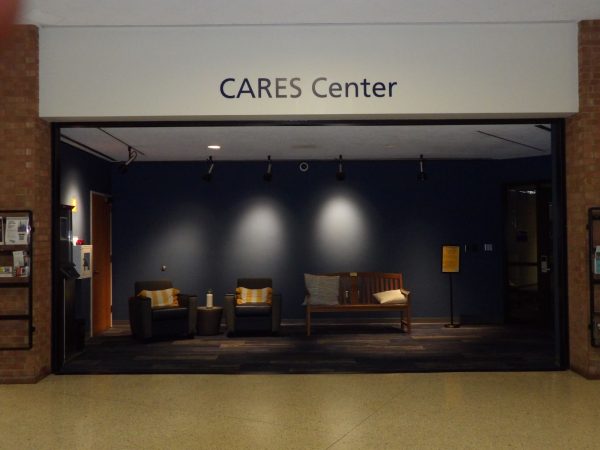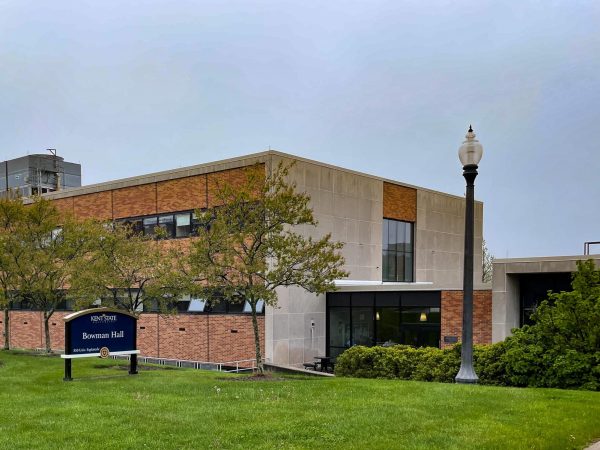Education classes head to Italy this summer
December 7, 2010
Over the past two years, Erin Wehrenberg has been to Cuba, Ireland and Germany on study-abroad trips. She also plans to go on another study abroad trip next semester to Greece to student teach.
Wehrenberg’s passion for traveling started in May 2008, when she took a trip with her Educational Psychology class to Florence, Italy.
“Italy was definitely the jump point,” said Wehrenberg, a senior middle-childhood education major. “It was the perfect starting trip for me to go on because it was only three weeks, and it was for a class that was mandatory anyways.”
This is the fourth year the Italy trip has been offered to students to obtain credit in either Educational Psychology or in Relational Learning in Education, said Anne Morrison, professor of both courses.
“We leave for Italy two weeks after spring final exams,” Morrison said. “The class is two to three weeks face-to-face then three weeks online, so it’s a hybrid course.”
The course gives students an opportunity to study a teaching method that they have been studying called Reggio Emilia.
“Reggio Emilia is an approach to early childhood education that our early childhood program is very influenced by,” Morrison said. “It’s an approach that began after World War II in Italy in a small town called Reggio Emilia.”
The Reggio Emilia approach is a student-lead curriculum in which the child is very important in determining what and how things are studied, she said. There are several schools in the town still operating this way. Students get the opportunity to observe classrooms and meet with the teachers of the approach.
“First, we spent a few days in Rome, then we took the train to Florence,” Wehrenberg said. “We would have class time in the morning for a couple of hours then our evenings were free.”
Students on the trip also got to experience the different Italian schools.
“We went to an international school where the children spoke English, and we also went to school where students only spoke Italian, so it was very interesting to try to communicate with them over a language barrier,” she said. “I think going to the schools was the most impactful part of the trip.”
The students who decide to take advantage of the Italy trip will have to raise the money themselves. The trip’s cost consists of summer tuition for the course, and between $3,000-$3,500 for their flight, hotel in Rome and apartments in Florence, Morrison said.
“This year, students are very resourceful and creative,” she said. “Some of the students already have the money to pay for it because they’ve been working and putting money aside. Students have also created good letters and gone around to local businesses in their town.”
This year, students are also putting together fundraisers to help pay their way.
“One fundraiser we’re having is we’re selling tickets for an iPad,” Morrison said. “I purchased an iPad, we’re selling the tickets for $10 apiece and two for $16, and all the funds raised will go toward the trip.”
Wehrenberg feels that studying abroad has taught her a lot about herself.
“You definitely learn about yourself in any study abroad because you have to be more self-sufficient,” Wehrenberg said. “Things that you take for granted that you can do without thinking about here, you have to think of a plan to do it overseas — like ordering food. It definitely made me more aware of my surroundings.”
“This is pretty much as good as it gets for our young people,” Morrison said. “They are able to learn so much in that environment in such a concentrated period of time.”
“The Italy course is a great starting point to see if the study abroad program is right for you or not,” Wehrenberg said. “Even if you have to take out loans to get there, it’s worth every single penny to pay it back.”
To find out more about the Italy trip, contact Anne Morrison at [email protected].
You can contact Chelsea Cassudakis at [email protected].
























